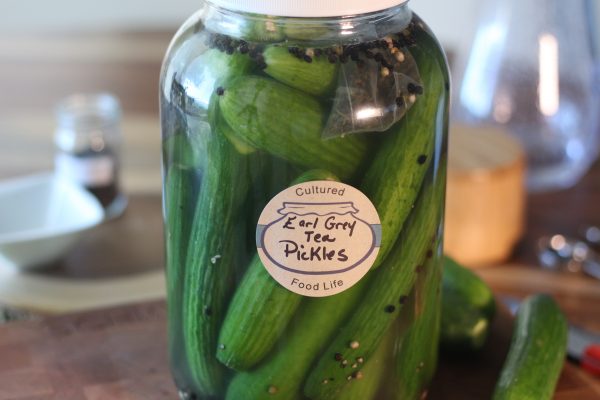Earl Grey Tea Pickles
Watch The Video
Equipment
Ingredients
- 1 package Veggie Starter Culture – plus 1 cup water; or ½ cup Kefir Whey
- 24 pickling cucumbers – depending on size
- 4 teaspoons black peppercorns
- 3 tablespoons Celtic Sea Salt
- 4 cloves garlic
- 4 bags Earl Grey tea
- ¼ teaspoon Calcium Chloride – optional see note*
Every ingredient with a link was selected by me to make it easier for you. I may receive a small affiliate commission if you buy something through my links. Thank you! ❤️
Instructions
- If using the starter culture, stir together the culture and water. Let the mixture sit while you prepare the ingredients—around 10 minutes.
- Cut the blossom ends off the cucumbers.
- Combine the peppercorns, salt, and garlic in a small bowl.
- Tightly pack the cucumber and peppercorn mixture into jars evenly. Add the starter culture or kefir whey and the tea bags. Fill the jar with filtered water to cover the cucumbers but leave 1 to 2 inches of headspace for them to bubble and ferment.
- Seal the jars and let them sit on your kitchen counter, out of direct sunlight, for 3 days.
- After 3 days, remove the tea bags and place them in the refrigerator.
- You can let them slowly continue fermenting in the fridge for an additional 3 days for a more intense flavor if desired!
Notes



